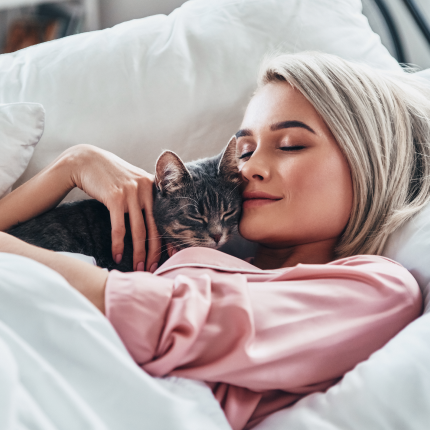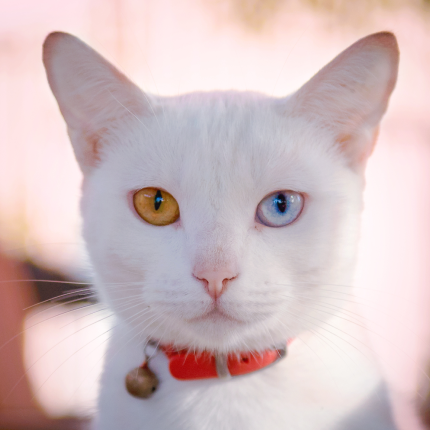New Study Suggests Cats Respond to Owner’s Baby Talk

Most of us can’t resist adopting a baby-like tone when communicating with our feline friends. We raise our voices, elongate our vowels, and ask repetitive questions like, “Whooo’s a good boy?” or “Whooo’s a pretty kitty?”
Studies have shown that dogs tend to appreciate this “caregiver speech” and pay more attention when spoken to in this manner. Research has uncovered that cats also respond to this baby talk, but there’s a twist: they do so primarily when their owner is the one doing the talking. This finding adds weight to the idea that cats, like dogs, may form bonds with their human companions akin to infants’ relationships with their caregivers.
Charlotte de Mouzon, an ethologist at Paris Nanterre University, embarked on this research journey due to a lack of studies on cat behavior in France. As a former cat behaviorist, she decided to delve into cat-human communication during her Ph.D. research.
First, de Mouzon confirmed something many cat owners already know: we tend to use baby talk when addressing our feline pals, a habit she confesses to.
But do cats, like dogs, genuinely react more positively to this ‘cat-directed speech’? To investigate, de Mouzon recruited 16 cats and their owners, who happened to be students at the Alfort National Veterinary School near Paris. To create a cat-friendly environment, de Mouzon transformed a standard room in the students’ dormitory into an impromptu animal behavior lab equipped with toys, a litter box, and hiding spots.
The students brought their cats into this room and remained silent while de Mouzon played a speaker’s recorded phrases. In one set of recordings, each cat heard their owner say five phrases, such as “Do you want to play?” or “Do you want a treat?”
The first three phrases were spoken in “adult-directed” speech, imitating how owners converse with other grown-ups. The fourth phrase was delivered in cat-directed speech, while the fifth reverted to adult-directed speech. This experiment aimed to determine if the fourth phrase would capture the cats’ attention.
Dogs typically exhibit unmistakable reactions when they hear “dog-directed” speech, like turning their heads or perking up their ears. Cats tend to be more subtle. To gauge their responses, de Mouzon assigned scores based on the cats’ reactions, such as ear movements or slight head turns, ranging from zero to 20, with 20 indicating the strongest reaction to the sound.
As the cats heard their owners’ first three phrases in adult-directed speech, their reactions gradually declined, with an average score dropping from 13 to four. However, when de Mouzon played the fourth phrase in cat-directed speech, the cats’ average reaction scores jumped to 14. Their scores then dropped again to around six upon hearing the fifth, adult-directed recording.
In contrast, when the same experiment was conducted with a stranger’s voice, the cats’ reaction scores started high (around 15) but failed to recover, dropping to about five, even when the stranger used cat-directed speech.
On the other hand, dogs tend to perk up even when addressed by strangers, which might be attributed to their greater exposure to various voices from different people, suggests de Mouzon. Even a stranger at the park might engage with them using baby talk.
These findings imply that cats, akin to dogs, may understand their relationship with humans as resembling that of a parent and their baby.
Interestingly, this communication is a two-way street. Cats have also adjusted how they “speak” to us. For instance, adult cats rarely meow to creatures other than humans, and their meows and purrs have evolved to include a high-frequency component reminiscent of human baby cries.
So, while humans have their unique way of conversing with cats, cats also have their way of responding to us.

Featured Articles

The Odd-Eyed Cat (AKA Heterochromia)
Cats are already beautiful and fascinating creatures, but people are bound to take notice when they have something as captivating as two different colored eyes. Odd-eyed cats always have one blue eye paired with either a green, yellow, or brown eye. This form of heterochromia occurs in other animals, including…

Greebles and Cats: The Origin and the Meaning
You may have seen an internet sensation concerning cats labeled “greebles.” Feel out of the loop? We’re here to help you. In 2019, Reddit user /user/literallyatree commented on a Reddit post about a cat that looks like it’s trying to slap a ghost. This user commented: “My family calls things…

Why Do Cats Roll Over Into Their Backs But Not Let You Touch Their Bellies?
It’s common knowledge dogs love to have their tummies rubbed when they freely lay down before you and roll onto their backs. But, if you’re also familiar with cats, you know that when they roll onto their backs with their bellies exposed, rubbing the belly will most likely result in…
